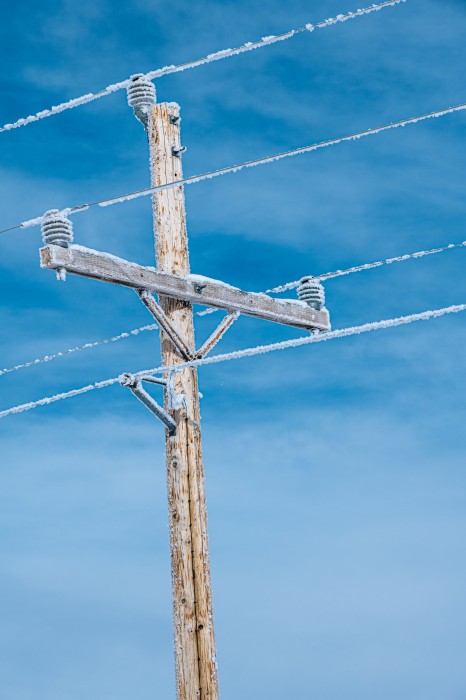As discussed in my previous blog post (Power Grids in a Changing World – Introduction), our power grid is encountering a massive amount of stress. Between climate change, physical interference, and an ever-increasing demand for power, the US power grid is facing unprecedented challenges.
One of the most pressing matters of grid security is physical acts of violence. Usually power grid attacks are something we only think about in times of war. Take for instance the Ukraine-Russia conflict. In one attack, 60 substations were knocked out of service in Ukraine’s power grid, resulting in a loss of power for over 250,000 citizens. This sounds like a shockingly high number of people losing power, but that statistic pales in comparison to a Federal Energy Regulatory Commission (FERC) report stating that if only nine key substations were targeted and knocked out of the US power grid, the entirety of the country could be without power.
This statistic isn’t just theoretical, either- in 2013, an unknown group attacked PG&E’s Metcalf substation near San Jose. 17 out of 24 transformers in the station were hit and knocked out with precision accuracy. This attack, fortunately, was unsuccessful at taking out power in major areas (save for a few neighborhoods directly near the station) like Silicon Valley because power was rerouted from other power stations, but proves just how little security exists in the power grid.
The scariest part is that these attacks are becoming more prevalent. A recent 60 Minutes segment ("How secure is America's electrical grid?") states that 38.7% of electrical outages are caused by some form of physical interference like vandalism at power stations.
In addition to intentional violent acts against the grid, the ever-increasing demand for power is also putting an enormous strain on the industry. One major contributor is EV charging stations. Most home installations are using Level 1 (120V) chargers, while dedicated public charging areas use Level 2 (240V). While this is already a large load, companies are looking to soon upgrade to Level 3 DC charging, which utilizes an astonishing 400V+ at over 100A. Under these conditions, the load one charging EV puts on the grid is equivalent to 10 electric dryers. If stations were to begin using this technology, the load on the grid would nearly double, causing brown or blackouts all over the country. The other trouble we face with EVs is the pushing of rapid changeover from combustion engine cars to EVs. If every car currently on the road were an EV, we would need to have three times as much power available than what we currently have. Our grid simply is not developed in a way that can support this amount of load.
Cryptocurrency is another major contributor to the increased demand in our generation. The process of generating the currency revolves around setting computers up to solve very complex mathematical equations which act as encryption to make sure the network does not get hacked. Due to the nature of their operation, these computers draw dazzling amounts of energy. The Texas-based Rayburn County Electrical Cooperative states that the two biggest "crypto mines" in its 16-county area of operation are built upon ranch land and each draw enough electricity to power 60,000 Texas homes. This incredible increase means that over $40 million is needed to upgrade the electrical infrastructure in the area to support the cryptocurrency operations. This is evident in other states as well. In New York, crypto operations have cost home and commercial consumers a total of $250 million according to a 2021 University of California Berkeley study.
Climate change is another cause of grid degradation. The most obvious example of a climate disaster’s impact on the grid recently is the Texas ice storm. Unexpected cold weather and ice buildup knocked out several areas of supply to the Texas grid, leaving over 10 million individuals without power and resulting in almost 250 people losing their life. Another example of this was the 2014 polar vortex. In addition to the physical effects of these conditions on the grid, in both cases the extreme frigidness resulted in record high electrical demand, blacking out several areas of service at a time. These events are becoming more common and could be potentially even more disastrous than they have been previously.
Now, even though these facts suggest the onset of a powerless and dystopian near future, there may yet be hope through the deployment of microgrids and other renewable accessories on the home, industrial, and grid scale. Check in next week for the third installation in this series regarding these technologies and the part they’ll play in saving our power grid.
Shine on,
Eric


